Introduction
Imagine a city where traffic flows smoothly, buildings use green energy, and nature and technology work together. In our modern world, this dream is becoming real. Smart Cities and sustainable infrastructure are changing how we live, work, and play. This article will show you how these ideas shape our future in a simple way that even kids can understand. You will learn about advanced technology, green energy, and eco-friendly design that make cities cleaner, safer, and more fun to live in. Our journey through urban evolution will inspire you to imagine a brighter, greener future.
What is Smart Cities?
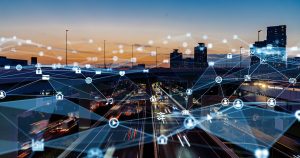
Smart cities use technology to improve everyday life. They connect devices, manage traffic, and keep citizens safe with innovative solutions. In a smart city, sensors collect data to help manage resources like water and energy more efficiently. This helps reduce waste and makes city services run smoothly. For example, smart traffic lights adjust to traffic flow to reduce congestion. Smart cities make use of technology in creative ways to solve problems and enhance the quality of life for everyone. They bring together modern technology and good urban planning to create a better living environment.
What is Sustainable Infrastructure?
Sustainable infrastructure is about building and maintaining things like roads, bridges, and buildings in a way that protects the environment. This means using materials and methods that are eco-friendly and energy-efficient. With sustainable infrastructure, cities can reduce pollution, lower energy costs, and create more green spaces. For instance, solar panels on buildings and green roofs not only save energy but also make cities look beautiful. Sustainable infrastructure ensures that as cities grow, they do so in a way that keeps nature safe and resources available for future generations.
How Smart Cities and Sustainable Infrastructure Work Together
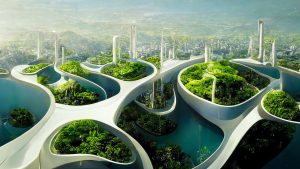
When smart cities and sustainable infrastructure join forces, the result is an urban evolution that benefits everyone. Technology helps monitor energy use and waste, while sustainable design ensures that resources are used wisely. This partnership makes cities more efficient and eco-friendly. For example, smart sensors in buildings can detect when lights or heating are not needed, saving energy and money. This blend of modern technology and green design creates cities that are not only advanced but also kind to the environment. Together, they build a future where people and nature thrive side by side.
The Benefits of Urban Evolution
Embracing urban evolution brings many benefits. First, it creates healthier environments with less pollution and more green spaces. Clean air and water improve overall well-being. Second, smart cities reduce traffic jams and make transportation more efficient, saving time and energy. Third, sustainable practices lower costs by using renewable energy and reducing waste. Lastly, these cities encourage innovation and creativity, offering new job opportunities and inspiring future generations. By investing in sustainable infrastructure and smart cities, communities can build a future that is both prosperous and eco-friendly.
Tips for Experiencing Urban Evolution
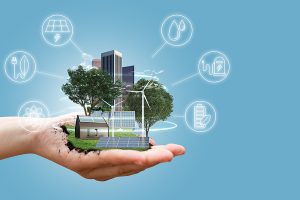
To enjoy the benefits of urban evolution, here are some simple tips:
Begin by learning about your city’s green projects and smart services. Look for public transport options that use clean energy and explore parks and community gardens. Support local businesses that practice eco-friendly methods. Try to reduce your own energy use by turning off lights and recycling. By taking these small steps, you can be part of the change and help build a better future.
The Role of Green Energy in Shaping Cities
Green energy is a key part of building sustainable infrastructure. This type of energy comes from natural sources like the sun, wind, and water. By using green energy, cities can reduce their reliance on fossil fuels, which helps lower pollution and combat climate change. Many smart cities now have solar panels, wind turbines, and other renewable energy sources that power homes, businesses, and public services. Green energy not only makes cities more sustainable but also saves money and creates new job opportunities in emerging industries.
Enhancing Urban Life with Eco-Friendly Development

Eco-friendly development means designing buildings and public spaces that use natural resources wisely. This can include green roofs, energy-efficient lighting, and smart water systems. In eco-friendly development, architects and planners work together to create spaces that are both beautiful and sustainable. This approach makes urban areas more pleasant to live in while protecting the environment. People in these cities enjoy cleaner air, safer neighborhoods, and more opportunities to connect with nature. Eco-friendly development is a key part of urban evolution, helping to create a balanced, future-ready city.
Table: Traditional Cities vs. Smart Cities with Sustainable Infrastructure
| Feature | Traditional Cities | Smart Cities with Sustainable Infrastructure |
|---|---|---|
| Energy Use | High reliance on fossil fuels | Uses green energy like solar and wind |
| Transportation | Often congested, inefficient | Smart traffic systems reduce congestion |
| Environmental Impact | Higher pollution and waste | Lower pollution through eco-friendly practices |
| Resource Management | Manual, less efficient | Automated systems for water, energy, and waste management |
| Public Spaces | Limited green areas | Abundant parks and community gardens |
This table shows how traditional cities differ from smart cities that use sustainable infrastructure. Notice the improvements in energy use, transportation, and environmental impact that come from embracing modern innovations.
The Future of Urban Evolution in 2025
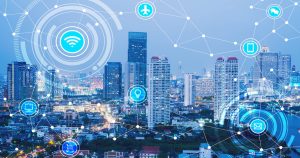
Looking ahead to 2025, the future of cities is bright. Advances in technology and design will continue to shape smart cities. Sustainable infrastructure will become more common, making urban areas cleaner and more efficient. Innovations in green energy and eco-friendly development will help cities reduce their environmental impact even further. As more communities adopt these practices, urban evolution will lead to safer, healthier, and more exciting places to live. The journey of building future cities is already underway, and everyone can be a part of this transformation.
The Impact of Digital Connectivity on Urban Life
Digital connectivity plays a big role in urban evolution. It links people, services, and information in real time. With high-speed internet and smart devices, citizens can access public services, transportation updates, and emergency alerts quickly. This connectivity makes cities more efficient and responsive to the needs of their residents. Digital connectivity also supports innovative projects like smart grids and online platforms for community engagement. By integrating digital technology into urban planning, cities become more resilient and adaptable, ensuring that everyone can benefit from a modern, connected environment.
How Urban Evolution Benefits Families and Children
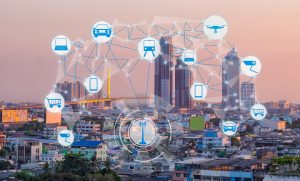
Urban evolution is not just for adults; it has many benefits for families and children too. With cleaner air, better public transport, and more green spaces, cities become safer and more fun. Children can explore parks, learn about nature, and enjoy community events in well-planned urban spaces. Schools can use digital tools to enhance learning, while parents benefit from a more efficient and sustainable environment. By embracing smart cities and sustainable infrastructure, families can enjoy a higher quality of life and a brighter future.
The Role of Community Engagement in Urban Development
Community engagement is a vital part of building successful smart cities. When citizens get involved in urban planning, their ideas help shape a city that works for everyone. Community meetings, online forums, and local projects allow people to share their thoughts on what makes a great city. This collaboration leads to more innovative and effective solutions that meet the needs of all residents. Community engagement also fosters a sense of belonging and pride in one’s city. By working together, communities can create an environment that is both sustainable and full of life.
FAQs
Q1: What is urban evolution?
A: Urban evolution is the process of transforming cities with modern technology and sustainable practices to create better living environments.
Q2: How do smart cities improve our daily lives?
A: Smart cities use technology to manage resources efficiently, reduce pollution, and improve transportation, making life easier and healthier.
Q3: What does sustainable infrastructure mean?
A: Sustainable infrastructure involves building and maintaining systems like roads and buildings in an eco-friendly way that conserves resources and protects the environment.
Q4: Why is green energy important in urban development?
A: Green energy reduces reliance on fossil fuels, lowers pollution, and supports eco-friendly practices in smart cities.
Q5: How can I contribute to urban evolution in my community?
A: You can support local eco-friendly projects, use public transport, participate in community meetings, and learn more about sustainable practices.
Conclusion
Urban evolution in 2025 blends smart cities with sustainable infrastructure to create greener, more Efficient Urban Spaces. This approach benefits families, improves quality of life, and protects our planet. Embrace the future by supporting eco-friendly innovations and community engagement for a brighter tomorrow.




